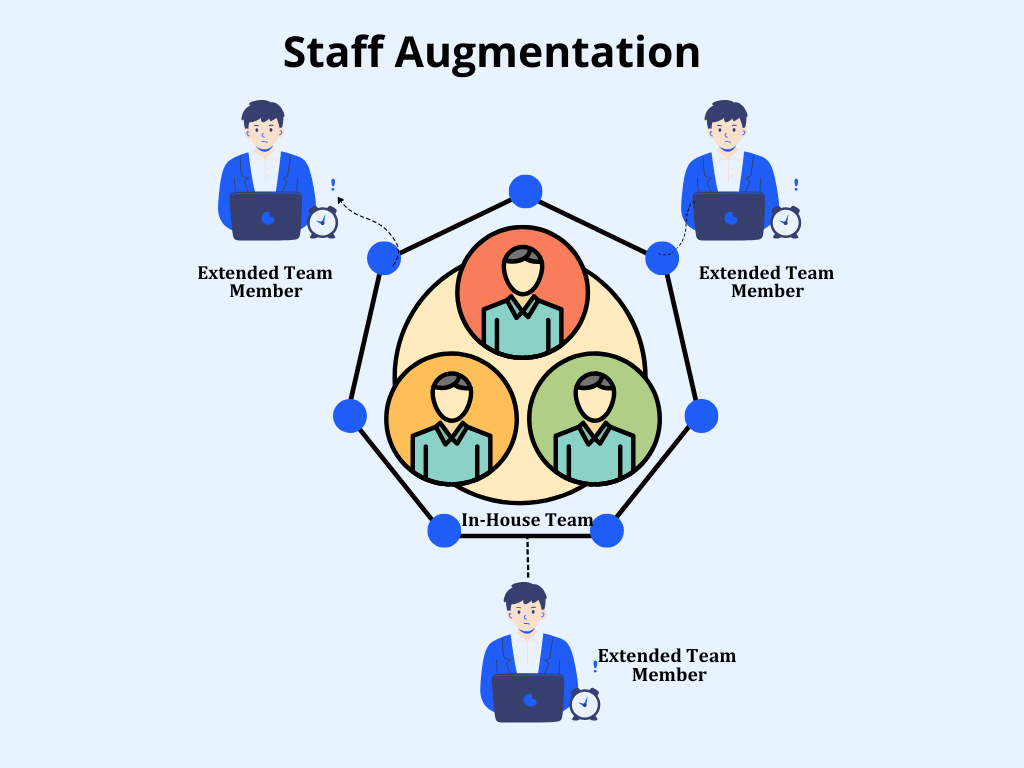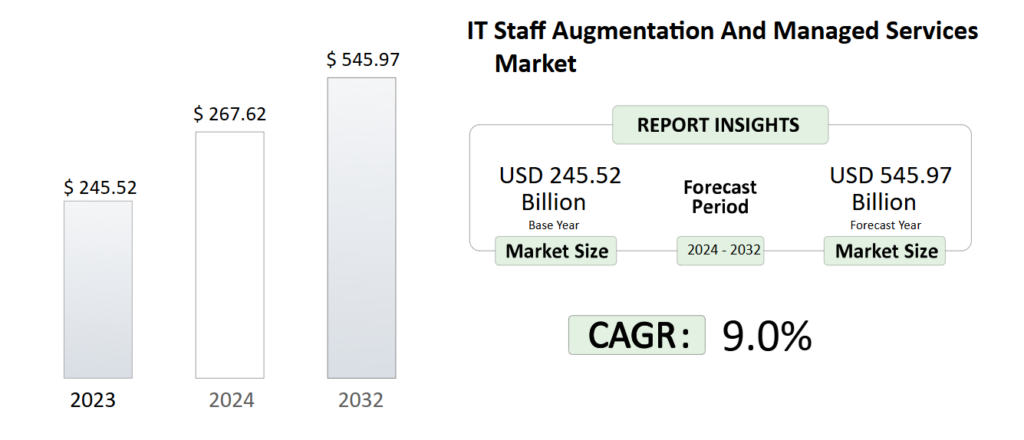
In today’s fast-paced business world, companies are constantly seeking flexible and cost-effective ways to build skilled teams and deliver successful projects. Two popular models that help businesses scale efficiently are staff augmentation and dedicated teams. Understanding their key differences can help you determine the best fit for your business needs.
Staff augmentation allows businesses to bring in external professionals to strengthen their existing teams by filling specific skill gaps. This model is ideal for companies that need additional expertise while maintaining control over project management.
On the other hand, a dedicated team is a fully outsourced group of professionals committed to a project from start to finish. This approach provides a long-term solution with a team that works exclusively on the assigned project, ensuring full ownership and seamless execution.
By understanding the advantages of staff augmentation vs dedicated teams, businesses can make informed decisions to optimize their workforce strategy and drive project success

Staff augmentation is a flexible hiring approach where businesses hire skilled professionals from outside their company to work alongside their in-house team. This model helps companies fill skill gaps, manage challenging workloads, and speed up project delivery—all with the long-term costs or commitments that come with hiring full-time professional employees.
Staff augmentation is a smart choice when your business faces skill gaps and needs professional employee support to your terms, but hiring skilled professionals is a long-term process. Here are some common situations when this model works best:
This approach is particularly useful for businesses in software development, IT services, and creative industries, where projects often require a mix of specialized skills and quick delivery.
The staff augmentation model is gaining popularity because it offers businesses flexibility and efficiency when building their teams. According to a report, the IT Staff Augmentation market was valued at USD 245.52 billion in 2023 and is projected to reach USD 267.62 billion by 2024, with further growth expected to hit USD 545.97 billion by 2032, growing at a CAGR of 9% from 2024 to 2032.
This steady market growth reflects the increasing demand for flexible workforce solutions, as businesses aim to access specialized talent quickly, reduce costs, and adapt to shifting project needs.

Imagine a growing tech company that wants to develop a mobile app but lacks Android developers in its in-house team. Hiring full-time developers would take months and cost a lot. Instead, they used staff augmentation to bring in experienced Android developers for just the duration of the project. This helped them launch the app on time, with the long-term costs of hiring permanent employees.
A dedicated team is a group of professionals working exclusively on your project, including developers, project managers, UI/UX designers, and QA specialists. They function as an extension of your in-house team and can be hired through a service provider. Unlike hiring a single developer through staff augmentation, a dedicated team offers a full-fledged workforce to manage the entire development lifecycle from start to finish.
The dedicated team model is popular among companies that need long-term collaboration and specialized expertise to handle complicated projects. It’s not just about hiring extra help—it’s about building a reliable team that works closely with your business for months or even years. The dedicated team model perfectly aligns with both goals, making it a trusted choice across industries.
Imagine an e-commerce company planning to upgrade its website to offer a better shopping experience. They partnered with a staff augmentation service provider for a dedicated team, including UX designers, and web developers, who worked exclusively on rebuilding the platform. The result? A smooth and successful platform upgrade that boosted user experience and sales.
When businesses are deciding how to expand their workforce, the choice often comes down to Staff Augmentation vs Dedicated Team. Both models offer unique advantages, and understanding their differences can help you select the best fit for your business goals.
| Aspect | Staff Augmentation |
| Definition | Hiring external developers or specialists to fill skill gaps in your existing team. |
| Purpose | To extend your in-house team with extra resources permanently. |
| Engagement Model | Long-term and skilled professionals based on project needs. |
| Team Control | You manage the augmented staff as part of your existing team. |
| Hiring Process | Fast onboarding to fill specific skill gaps quickly. |
| Cost Structure | Fixed monthly pricing or a pay-as-you-go model. |
| Best For | Long-term projects, skill shortages, or when in-house teams need support. |
| Aspect | Dedicated Team |
| Definition | A Dedicated Team is a group of professionals who work completely on your project, acting as part of your team but hired through an outsourcing company. |
| Purpose | To build a long-term, dedicated team for ongoing or large-scale projects. |
| Engagement Model | Long-term collaboration with a stable team. |
| Team Control | You manage the dedicated team as your remote team. |
| Hiring Process | Tailored recruitment to form a complete team aligned with your goals. |
| Cost Structure | Monthly payment for the team (like salaries). |
| Best For | Long-term projects require a full-time team that grows with your business. |
Both Staff Augmentation and Dedicated Team models offer unique advantages. If you need flexibility and specialized skills for a long-term project, staff augmentation is a great option. However, if you’re looking for a long-term, fully committed team, a dedicated team model might be the best choice.
Choosing between staff augmentation and a dedicated team depends on your project requirements, budget, and long-term goals. Each model has its strengths, but the right choice can help your business grow faster and work more efficiently.

While both models have their place, staff augmentation often stands out as the best choice for businesses that need flexibility, cost control, and quick access to talent.
Here’s why staff augmentation might be the perfect solution for your business:
Staff augmentation helps businesses stay agile, reduce costs, and complete projects faster—making it a smart solution for growth.
Choosing between staff augmentation and a dedicated team depends on your business needs, project scope, and long-term goals. If you need a flexible and cost-effective way to expand your workforce with specialized professionals, staff augmentation allows you to quickly integrate skilled experts into your existing team. This model ensures you have the right talent at the right time, helping you meet project demands, drive innovation, and scale efficiently.
On the other hand, if your project requires a fully committed team working exclusively on long-term objectives, a dedicated team offers the perfect solution. With full project ownership and deep collaboration, this model provides stability and seamless execution, ensuring strategic alignment with your business goals.
By understanding the strengths of each model, you can make the best choice to optimize your workforce strategy and achieve long-term success in a competitive market.